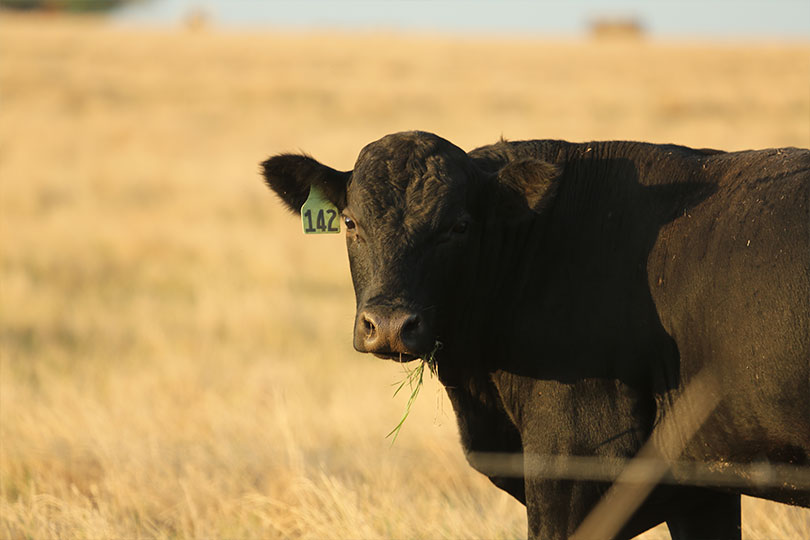Every pound counts and every expense should be optimized in the beef cattle business.
Financial opportunities can be found in designing strong breeding and forage and pasture plans for beef cattle herds, according to AgriLife Today.
Most beef cattle operations have completed fall calving and should introduce bulls by Dec. 1-15 to have calves on the ground in early fall 2018, according to Dr. Monte Rouquette, AgriLife Research forage physiologist in Overton.
Rouquette has researched stocking strategies and ways to optimize the herd and forage performance interface for more than 40 years. He said many ranchers follow plans designed to birth calves during specific windows throughout the year, while other ranchers allow up to 120-day breeding seasons or year-round calving either by default or logistical limitations.
“Some producers feel that any pregnant cow at any time of the year is better than an open cow,” he said. “But they may not be optimizing output and taking advantage of opportunities that are available to have those calves on the ground and ready to put on weight when the winter-annual forage spring flush arrives.”
Rouquette’s plan calls for putting bulls out to begin the breeding season on Dec. 1 for 60-75 days. This ensures cows and bulls will likely not be stressed by harsh winter conditions and calves will be born in early fall and prepared for winter conditions.
Having calves on the ground in September to October also ensures they will be set up to gain three pounds per day during the spring flush, he said.
“You want that for 60-90 days,” he said. “It’s more likely to be around 75 days, but that calf will jump from 450 pounds to 700 in that time. It’s the opportunity for heavier weaning weights, and when you’re selling pounds, every pound gets you closer to covering costs and making a profit.”
If a rancher follows Rouquette’s plan, cows will be dry during July and August when stresses such as heat, low nutritive value forages, pests and drought are highest within a herd.
Any plan should start with cow body condition scores and soil tests of pastures that provide summer perennial and winter annual forages, Rouquette said.
“They go hand in hand,” he said. “When you have your cows with a body condition score of 5 or 6 at time of calving, and pastures are getting the proper fertilizer nutrients needed for optimal forage production under the predictable climatic conditions, then you have a soil-plant-animal combination that can pay real dividends.”
At this point, ranchers want to improve or maintain cow body condition scores with a nutrition regimen that includes standing forages, higher quality hay and/or supplements or that allows for limited grazing on cool-season annuals such as small grains and ryegrass, Rouquette said.
Limiting grazing during December to January at two to three cows and calves per acre allows the costs of winter pasture to be dispersed across several pairs. When the “spring flush of growth” begins about mid-February, then grazing time can increase until pairs graze full time.
Rouquette said limit-graze cows for two to four hours each day while allowing their calves free range between pastures via creep gates, which are only big enough for young calves to enter and exit. This stocking strategy allows the rancher to control the severity of grazing pressure to prevent severe defoliation and reduced forage regrowth.
“You want cows at a BCS (body condition score) of 5 or greater and on a pasture/forage nutritional regimen that will help that cow rebound after calving and prepare her to be bred as soon as possible,” he said. “That helps you hit that 12-month calving window, because the goal is to have a calf every year. Without controlling the process with a designed plan, a producer could easily push that to a calf every 15 months or longer. That can be a big deal and reduced income during the cow’s productive years.”

